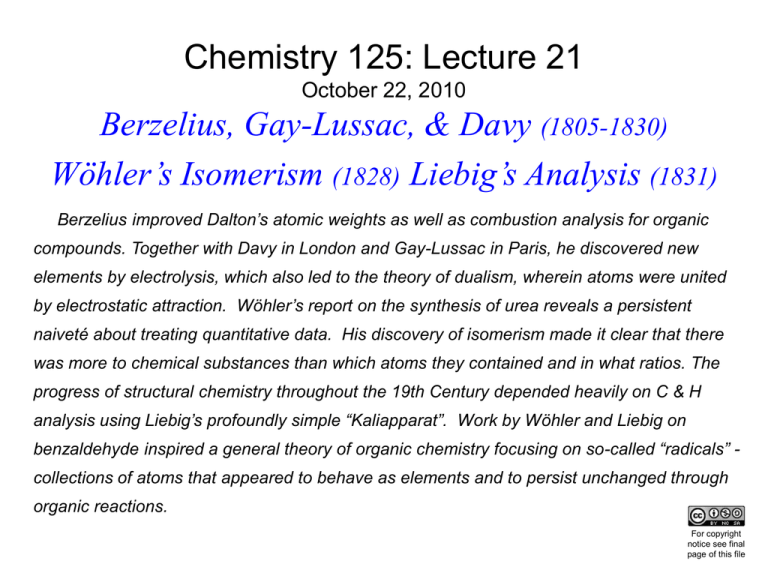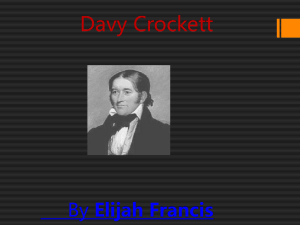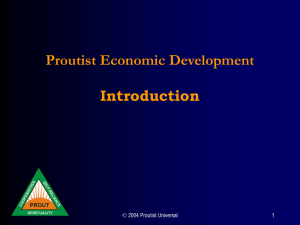
Chemistry 125: Lecture 21
October 22, 2010
Berzelius, Gay-Lussac, & Davy (1805-1830)
Wöhler’s Isomerism (1828) Liebig’s Analysis (1831)
Berzelius improved Dalton’s atomic weights as well as combustion analysis for organic
compounds. Together with Davy in London and Gay-Lussac in Paris, he discovered new
elements by electrolysis, which also led to the theory of dualism, wherein atoms were united
by electrostatic attraction. Wöhler’s report on the synthesis of urea reveals a persistent
naiveté about treating quantitative data. His discovery of isomerism made it clear that there
was more to chemical substances than which atoms they contained and in what ratios. The
progress of structural chemistry throughout the 19th Century depended heavily on C & H
analysis using Liebig’s profoundly simple “Kaliapparat”. Work by Wöhler and Liebig on
benzaldehyde inspired a general theory of organic chemistry focusing on so-called “radicals” collections of atoms that appeared to behave as elements and to persist unchanged through
organic reactions.
For copyright
notice see final
page of this file
Jöns-Jakob
Berzelius BERZELIUS
(1779-1848)
Organic & Mineral
Analysis
2000 compounds in 6 years!
Good Atomic Weights
Textbook
(1808)
for 50 elements!
Electrolysis
Dualism
(double decomposition)
Teaching
& Writing
Notation for
Composition
Berzelius’s
Table of
atomic &
molecular
weights
(1831)
Weights
Scaled to
modern
O = 15.9994
[15.999]
0.998 (-1.0%)
Bars denote
doubled atoms
14.162 (-1.0)
32.185 (0.4)
30.974 (1.3)
discrepancy
from modern
value
10-fold
increase
in accuracy
from
Based
on O
= 100 or
H2Dalton!
=1
Combustion
Analysis
Improved Method of
Combustion Analysis
Berzelius Analysis
(1)
(4)Tube
Assembled
1/2” diameter
(Fig 6) so(Fig
that
1) charged
gases (Owith
) that powder
exit drying
containing:
tube
2, CO2dried
~0.5
willJoined
gbubble
of organic
into
substance
bell-jar
containing
to be analyzed,
Hg (Fig 3)
(3)
(Fig
4) to
water-collecting
bulb
(2) Neck of tube heated and drawn out (Fig 2)
with floating
3 gCaCl
NaClO
bulb2 (Fig
(Gay-Lussac’s
holding
KOH
Orubber
(to absorb
CO2)
and
drying
tube with
tubing
2 source),
3 5)
and closed
50 with
g NaCl
permeable
(to moderate
glove
reaction
leather
by (to
dilution).
keep out Hg).
Improved Method of
Combustion Analysis
Berzelius Analysis
O2
KOH
CO2
(5)(6)
Build
firecertain
in brick
to heat
slowly
neartheend to
To be
theenclosure
KOH absorbs
alltube
of the
CO2 from
through
far.glove
Tubeleather,
wrapped
with
keep
it fromstops
popping
wait
12metal
hourssheet
aftertothe
mercury
risingwhen
in theit
softens
at before
red heatdisassembling
under the pressure
necessary to bubble through Hg.
bell jar
and weighing.
Electricity
N2O at the
Royal Institution
London, 1802
Humphry
Davy
New York Public Library
1807-8
Humphry Davy
Big Science
at London’s
Royal Institution
Electrolysis
Cu
Zn “couple”
1.1 v
26 v
301 v
12×12”
Pile
6×6”
110 v
1799
4×4”
Volta
165 v
Battery of Berzelius
Davy (1808)
I acted upon aqueous solutions of potash and soda, saturated at
common temperatures, by the highest electrical power I could
command, and which was produced by a combination of Voltaic
batteries belonging to the Royal Institution, containing 24 plates
of copper and zinc of 12 inches square, 100 plates of 6 inches,
and 150 of 4 inches square…
…though there was a high intensity of action, the water of the
solutions alone was affected, and hydrogen and oxygen
disengaged with the production of much heat and violent
effervescence.
Davy (1808)
The presence of water appearing thus to prevent any
decomposition, I used potash in igneous fusion. By means of a
stream of oxygen gas from a gasometer applied to the flame of a
spirit lamp, which was thrown on a platina spoon containing
potash, this alkali was kept for some minutes in a strong red heat,
and in a state of perfect fluidity. The spoon was preserved in
communication with the positive side of the battery of the power
of 100 of 6 inches, highly charged; and the connection from the
negative side was made by a platina wire.
By this arrangement some brilliant phenomena were produced.
The potash appeared a conductor in a high degree, and as long as
the communication was preserved, a most intense light was
exhibited at the negative wire, and a column of flame, which
seemed to be owing to the development of combustible matter,
arose from the point of contact.
Davy (1808)
A small piece of pure potash, which had been exposed for a
few seconds to the atmosphere, so as to give conducting power
to the surface, was placed upon an insulated disc of platina,
connected with the negative side of the battery of the power of
250 of 6 and 4, in a state of intense activity; and a platina wire,
communicating with the positive side, was brought in contact
with the upper surface of the alkali.
…small globules having a high metallic lustre, and being
precisely similar in visible characters to quick-silver,
appeared, some of which burnt with explosion and bright
flame, as soon as they were formed, and others remained, and
were merely tarnished, and finally covered by a white film
which formed on their surfaces.
1807-8
Humphry Davy
Big Science
at London’s
Royal Institution
Li Be B
Na Mg Al
K Ca Ga
Rb Sr In ~650 v
Cs Ba Te
Napoleon’s Response
(via Gay-Lussac)
“...on his alluding to the taste produced by the contact of
two metals, with that rapidity which characterised all his
motions, and before the attendants could interpose any
precaution, he thrust the extreme wires of the battery
under his tongue, and received a shock which nearly
deprived him of sensation. After recovering from its
effects, he quitted the laboratory without600
making
1 kg any
Cu plates
remark, and was never afterwards heard600
to refer
to the
3 kg Zn
plates
2,200
v
subject.” from: “The Life of Sir Humphry Davy, Bart.” 2.6 tons of metal
Electricity supplied more
than new elements...
It also supplied the
organizing principle for
Dualism
1774 Symbols
Chemical
Symbols
of 1774
(Sweden)
Mix with Caustic Soda
"Double Decomposition"
Dualism
Explained by Electricity
+
-
AB
+
+
-
CD
2 NaOH + CuSO4
+
-
AD
+
+
-
CB
Na2 SO4 + Cu (OH)2
precipitate
“Electronegativity”
First use in English (according to O.E.D.)
1837 J. D. Dana Syst. Mineral. 82 When chemistry
has so far advanced, that the relative electro-negativity,
(if I may so call it,) or electro-positivity, of the several
elements, is fully known,..we shall probably be able to
construct a natural arrangement of minerals on chemical
principles.
J. D. Dana
1813-1895
son-in-law
of Benjamin
Silliman
Dana House
1849
Genealogy Top
Wöhler/Liebig
to J.J. Berzelius
Heidelberg, 17 July, 1823
“Having developed the
greatest respect for you
through studying your
writings, I have always
thought it would be my
greatest good fortune to
be able to practice this
science under the
direction of such a man,
which has always been
my fondest desire.
Although I earlier had
planned to become a
physician…”
With the greatest respect
F. Wöhler
from Frankfurt am Main
Letter to Berzelius (1837)
“To see this old friend
[Palmstedt] again, especially
here [in Göttingen], was a
real delight. He was just the
same old guy, with the sole
exception that he no longer
wears the little
toupee swept
up over his
forehead as
he used to do.”
Friedrich Wöhler
(1800-1882)
1828
Urea
&
Isomerism
(problems for Monday, Oct. 25 - see web readings)
Wöhler to Berzelius (1828)
"Perhaps you still remember the experiment
I carried out in that fortunate time when I was
working with you, in which I found that
whenever one tries to react cyanic acid with
ammonia, a crystalline substance appears which
is inert, behaving neither like cyanate nor like
ammonia."
"Ammonium Cyanate"
from Double Decomposition
NH3
Not like an
ammonium
salt!
NaOH
+
-
+
-
NH4 Cl + Ag OCN
HNO3
-
+
(Just like those from Urea + HNO3)
-
NH4 OCN + Ag Cl
H+
OCNH
Brilliant Crystal Flakes
+
Pb++
Pb(OCN)2
Not like a cyanate salt!
Berzelius to Wöhler: "It is a unique situation that the
salt nature so entirely disappears when the acid and
ammonia combine, one that will certainly be most
enlightening for future theory…"
Might Ammonium Cyanate Be Urea?
Wöhler to Berzelius: "I recently performed a small
experiment, appropriate to the limited time I have
available, which I quickly completed and which,
thank God, did not require a single analysis."
Urea had already been Analyzed
Prout’s
better than Berzelius’s experiments!
Paragon oftheory
accuracywas
and honesty
Approx.
Recalc.
NH4OCN
Dr. Prout Atom
(calculated by Wöhler
(from
from Berzelius
Ratios Modern
(1817)
Berzelius)
atomic weights)
N
C
H
O
1
46.650
46.65
46.78
46.781
19.975 1
20.00
20.19
20.198
2
6.670
6.71
//6.59
06.595
Discrepancies <2%
1
26.650
26.64
26.24
26.425
identical
Total 99.875
100.00
99.80?
100.000
99.945
truncated
Dyslectic
Error
Prout
did
dry-lab
by
making
an
approximate
analysis
Experimental
Candor? better than Berzelius’s Theory
(added
wrong)
Prout’s
Experiment
of notice!)
(instead
& his
he didn't
and reporting results “corrected” by
theory!
Prout N2 by gas volume: "6.3
V, T,
cubic
P within
inches"
0.02%?
Just Lucky?
rounding
up
Moral:
(like Lavoisier)
Prout’s Atomic
WeightDon’t
Theory:dry-lab!
H = 1 ("protyle"
ulh prwth)
C = 6 ; O = 8 ; N = 14
Ammonium Cyanate to Urea
H
H make & break
H
N
N
s*
H
H
H
H
N
H
n
C
n
H
N
p*
Can ammonium
cyanate exist? HH2N
N
H
N
C
O
O
H
attack p*
H
?
H
C
O
NH2
H
C
OH
C=O very stable (lore)
s
*
H N
H
N
O
n
C
poor
overlap
Resonance
Structures!
probably
intermolecular
Dunitz, Harris, et al. (1998)
Wöhler on Isomerism (1828)
"I refrain from all the considerations which so
naturally suggest themselves from this fact,
especially in respect to the composition ratios of
organic substances and in respect to similar
elemental and quantitative compositions
among compounds with very different
properties, as may be supposed, among others,
of fulminic acid and cyanic acid and of a liquid
hydrocarbon and the olefiant gas, and it must be
left to further investigations of many similar
cases to decide what general laws can be derived
therefrom."
On the Composition of Tartaric Acid and Racemic Acid
(John's Acid from the Vosges Mountains), on the Atomic
Weight of Lead Oxide, together with General Remarks on
those Substances with have the Same Composition but
Different Properties. by J. J. Berzelius (1830)
"I have thought it necessary to choose between the words :
homosynthetic and isomeric substances. The former is built from
homos, equivalent, and synthetos, put together; the latter from
isomeres has the same meaning, although it only properly says
put together from the same pieces. The latter has the advantage
with respect to brevity and euphony, and thusX-Ray
I have showed
decidedthat
to
these crystals are
choose it."
Calcium Tartrate • 4 H O
"By isomeric substances I understand those which possess 2
the same chemical composition and the same atomic [molecular]
weight, but different properties."
There is more to chemistry
than Berzelius’s analytical
COMPOSITION!
Now we know the importance of
atomic arrangement, or STRUCTURE:
CONSTITUTION
CONFIGURATION
CONFORMATION
but we need to be patient.
HNCO
Isomer
Energies
W.D. Allen et al., J. Chem. Phys.,
120, 11586-11599 (2004)
(same CNO anion)
O +56.3
N
C
C
+
N
_
O
+40.9
Fulminic Acid (Liebig)
(Latin fulmen = lightning)
"we have pushed ab initio
quantum chemistry to its
current limits for the
C
N
O
-3.1
species NCO, HNCO,
HOCN, HCNO, and
HONO, all in pursuit of (same NCO anion interconvert easily)
subchemical accuracy
Cyanic Acid (Wöhler)
(approximately 0.1-0.2
C
-27.8
N
O
kcal/mole)"
Justus
Liebig
(1803-1873)
1824 in Paris
working on
Silver Fulminate
with Gay-Lussac,
who noticed the
analysis was like
Wöhler's of
Silver Cyanate
Liebig 1836
SCL
SCL Library
Liebig Analysis (1831)
(1837)
Combustion
H2O
Collector
cushioned
tilted
CO2 Collector
Backwards!
Big
Kaliapparat
out
in
out in
1852
Lab
Liebig’s Laboratory in Giessen
Stammbaum
Some Liebig Scientific Descendants
you
Red = Nobel Prize
Lab Workers
?
A master and glittering
teacher of chemistry
the triumphant discoverer
of aniline and aniline dyes
1832
Radical Theory
Correspondence of Liebig & Wöhler
Winter 1825 - Wöhler and Liebig first meet in Frankfurt.
October 1830 - They first write using familiar “Du”.
16 May 1832 - Wöhler: I long to do some more significant
work. Shouldn't we try to shed some light on
the confusion about the oil of bitter almonds?
But where to get material?
15 June 1832 - Liebig: My poor, dear Wöhler, how empty
is every comfort against such a loss…When I
think how content and happy you were during
your move, what attachment and love you had
for one another…The good wife, so young, so
full of life, and so irreplaceable for her parents
and for you…
Correspondence of Liebig & Wöhler
Come to us, dear Wöhler, although we may
not be able to give you comfort, we will perhaps
be able to help you bear your grief. Staying in
Cassel at this time would only be detrimental to
your health. We need to be busy with something,
I have just been able to get some amygdalin from
Paris, and I am ordering 25 pounds of bitter
almonds. You must not travel, you must busy
yourself, but not in Cassel.
I haven't had the courage to tell my wife yet.
I can only tell her bit by bit because I know how
much it will affect her.
Come to us, I expect you at the end of this
week.
End of Lecture 21
October 22, 2010
Copyright © J. M. McBride 2009,2010. Some rights reserved. Except for cited third-party materials, and those used by
visiting speakers, all content is licensed under a Creative Commons License (Attribution-NonCommercial-ShareAlike 3.0).
Use of this content constitutes your acceptance of the noted license and the terms and conditions of use.
Materials from Wikimedia Commons are denoted by the symbol
.
Third party materials may be subject to additional intellectual property notices, information, or restrictions.
The following attribution may be used when reusing material that is not identified as third-party content:
J. M. McBride, Chem 125. License: Creative Commons BY-NC-SA 3.0










